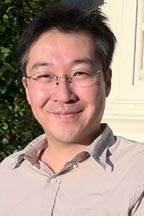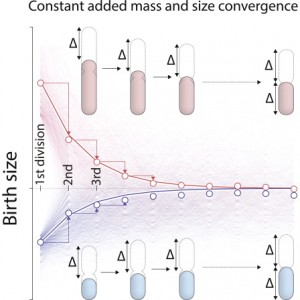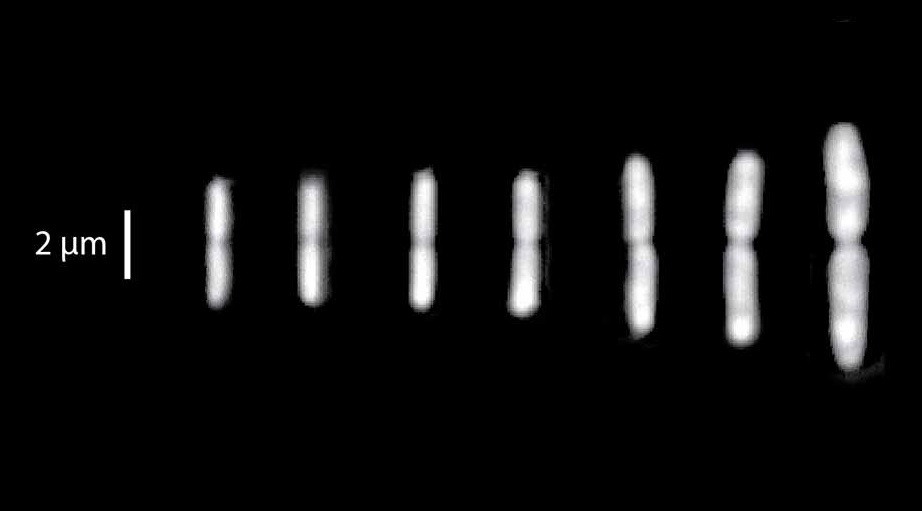How do cells control their size? What causes them to divide? Contrary to what many biologists have expected, evidence supporting an answer to one of the most fundamental and longstanding problems of biology has been accomplished by UC San Diego researchers. The study surprised even the researchers: a simple quantitative principle explains the phenomena without regard for either of the currently prevailing theories.
“Life is very robust and ‘plastic,’ much more than what biology textbooks tell us. Bacteria probably do not care when they should start replicating their genomes or dividing,” Dr. Suckjoon Jun, assistant professor of physics and molecular biology at the University of California, San Diego and one of the lead authors of the study, told The Speaker.

“Simple mathematical principles help us understand fundamental biology, just like in physics.”
How do cells control their size? What causes them to divide?
Biologists had previously posited two possible solutions: either a cell reaches a certain size, at which it divides into two smaller cells; or after a certain time has passed, the cell divides. The two theories have been known as “sizer” and “timer.”
The results surprised the researchers as well: “adder.”
“The results were completely unexpected,” Jun told us.
Rather than either sizer or timer paradigms, cells were found to add a constant volume each generation, regardless of their newborn size.
“This ‘adder’ principle quantitatively explains experimental data at both the population and single-cell levels, including the origin and the hierarchy of variability in the size-control mechanisms and how cells maintain size homeostasis,” the researchers concluded, whereas in past research based on “sizer” and “timer” theories led to difficult-to-verify assumptions or population-averaged data and varied interpretations.
Time and size, while variable in some organisms, do not even factor into the existence of “perfect adders” in the newly found and “extraordinarily simple” quantitative principle of cell-size control.
“It seems most bacteria we have studied so far, and more data is coming out of other labs, appear to be perfect adder,” said Jun. “Some higher organisms, such as yeast, do care about size more than bacteria do. For example, small-born yeast cells add more mass than large- born cells to reach division. That is, how much mass they add since birth is sensitive to how big the baby cell was. Nevertheless, the way they reach the target size, generation after generation, works exactly same as the perfect adders such as bacteria, which is quite nice and surprising.”
born cells to reach division. That is, how much mass they add since birth is sensitive to how big the baby cell was. Nevertheless, the way they reach the target size, generation after generation, works exactly same as the perfect adders such as bacteria, which is quite nice and surprising.”
The growth of cells follow the growth law, the researchers found, and grow exponentially at a constant rate.
Jun explained the challenge that had stood in the way of understanding this aspect of cell division in the past: “Two biggest obstacles have been (one) dogmas that cells somehow must actively sense space or time to control cell size, and (two) technology that did not exist until recently, which now allows monitoring the growth and division patterns of tens of thousands of individual cells under tightly controlled environment.”
The research team developed a tiny device that isolates individual genetic materials.
The tool allowed the researchers to observe thousands of individual bacterial cells–Gram-negative E. coli and Gram-positive B. subtilis–over hundreds of generations. The researchers manipulated the conditions in which the cells lived. A wide range of tightly controlled steady-state growth conditions were experimented with.
According to the researchers, the new method allowed them to produce statistical samples about a thousand times better than had previosly been available.
“We looked at the growth patterns of the cells very very carefully, and realized that there is something really special about the way the cells control their size,” explained Jun.
“No one has been able to answer this question,” Jun said in their press release, noting that this was even the case for the E. coli bacterium, possibly the most extensively studied organism to date.
The research holds the promise of better informing the fight against cancer, since one of the most important problems in the fight is the process of runaway cell division.
The reports, “Cell-size maintenance: universal strategy revealed” and “‘Cell-size control and homeostasis in bacteria” were completed by Suckjoon Jun, Massimp Vergassola and Sattar Taheri-Araghi, and were published in the journal Current Biology .
Images: the work of the researchers
